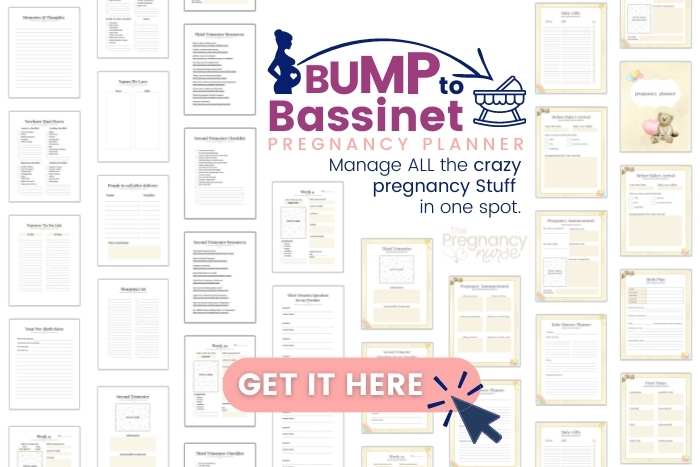People feel very worried wondering how long their labor will be. Today’s episode we’re talking about what to expect in the length of your labor and how to decrease it.
Today’s guest is The Labor support Nurse — Rochelle is a Labor and Delivery Nurse from California who love labor support and Spinning Babies.
This episode was inspired by my labor fears study.
Big thanks to our sponsor The Online Prenatal Class for Couples — if you’re looking to understand what happens during labor (and what to expect from your body) — it is the class for you!
Producer: Drew Erickson
Check out my other pregnancy podcasts:

Transcript
[00:00:00.170] – Hilary Erickson
Hey, guys. Welcome back to the Pulling Curls Podcast. Today on episode 183, we are talking about the length of labor. Let’s untangle it.
[00:00:18.370] – Hilary Erickson
Hi, I’m Hilary Erickson, the curly head behind the Pulling Curls Podcast: pregnancy and parenting untangled. There’s no right answer for every family, but on this show, we hope to give you some ideas to make life simpler at your house. Life’s tangled, just like my hair.
[00:00:40.010] – Hilary Erickson
So I got the idea for this podcast from my labor fear study that I did a while ago. And this is one of the decent sized fears that a lot of people have is that their labor is going to be super long. So I want to talk about that today. And I brought on a friend from TikTok to do it with me. Today’s guest is the labor support nurse. I actually found her on TikTok at Rochelle the RN. I want to introduce today’s guest Rochelle.
[00:01:08.070] – Hilary Erickson
Do you feel prepared for your delivery? In just three short hours, you can be prepared for the confident, collaborative delivery you want. You’ll know what to expect and how to talk with your healthcare team. And there are no boring lessons in this class. I’ll use humor, stories from my 20 years in the delivery room to engage both of you. I love how Alyssa told me that she found herself laughing at things that used to sound scary. Most of all, you guys are going to be on the same page from bump to bassinet. Join the online prenatal class for couples today. You can save 15% with coupon code UNTANGLED. You can find the link in the show notes.
[00:01:43.070] – Hilary Erickson
Hey, Rochelle. Welcome to the Pulling Curls Podcast.
[00:01:45.800] – Rochelle
Hi, Hilary. Thanks for having me.
[00:01:47.590] – Hilary Erickson
Yeah, I’m excited for this topic because I think it’s something that throws a lot of people off.
[00:01:52.530] – Rochelle
Totally.
[00:01:53.270] – Hilary Erickson
Yeah.
[00:01:53.700] – Rochelle
It’s a mystery, right?
[00:01:54.960] – Hilary Erickson
I feel like they either think it’s going to be seven years, but they aren’t really prepared. They just, like, think in their mind, this is going to last forever, or it’s like it is in the movies and within a half hour, your baby’s out. Right.
[00:02:07.390] – Rochelle
Seriously, the movies make it seem, like, so crazy and fast.
[00:02:10.570] – Hilary Erickson
Yeah, it would be episode..
[00:02:12.370] – Rochelle
Which it can be, but rarely.
[00:02:14.500] – Hilary Erickson
After episode, after episode.
[00:02:17.690] – Rochelle
And it’s always an emergency, right, on the movies?
[00:02:21.320] – Hilary Erickson
Yeah.
[00:02:21.700] – Rochelle
Always a medical emergency.
[00:02:22.890] – Hilary Erickson
That’s because everyone else in the hospital thinks it is a medical emergency.
[00:02:26.660] – Rochelle
Right. Especially the ER. I won’t say that.
[00:02:29.920] – Hilary Erickson
That’s been said on this podcast before. All the ER nurses, they all know what we’re talking about. Okay. So the funny thing is I don’t know where you chart do you have to put when did labor begin for this patient?
[00:02:41.500] – Rochelle
Yeah, we have a button on our charting, and it says, is the patient. It says, ask for the start of latent labor. And then it asks for is the patient active labor? And then obviously there’s the oh, and then there’s 6 centimeters complete. There’s, like, four or five different things.
[00:02:58.460] – Hilary Erickson
We have to chart on the beginning of labor. I was always like, I don’t know how long I’m gonna have to be a labor and delivery nurse before I have a clue what to put in this box. Because I was always like, I don’t know. First time I wasn’t at their house unless they were an induction.
[00:03:10.830] – Rochelle
Right.
[00:03:11.410] – Hilary Erickson
I don’t know. So I just guessed.
[00:03:14.020] – Rochelle
I always just ask them when their contractions started getting strong and regular and made them want to come into the hospital.
[00:03:21.330] – Hilary Erickson
Yeah. And then they’d always be like, well, I don’t know. Define strong, right? I don’t know.
[00:03:28.130] – Rochelle
Just give me a time. I’m just plugging it in.
[00:03:30.790] – Hilary Erickson
It’s all I’m doing here. It’s just for reports somewhere to be printed somewhere. Yeah. I think a lot of people don’t understand that you aren’t just like, oh, wow, labor has started. Until you’re in active labor and you really know labor started because it’s getting serious. But then when you look back, you’re like, oh, yeah. Like three or 4 hours ago, labor was starting, turns out.
[00:03:49.630] – Rochelle
Right.
[00:03:50.060] – Hilary Erickson
Yeah. It’s super confusing. So when you hear your friend who’s like, I was in labor for 36 days. 36 hours. 36 days would be fun, but they’ll be like, I was in labor for 36 hours. Usually, that doesn’t mean..
[00:04:01.960] – Hilary Erickson
That’s exactly what I hear from my mom. That’s what I get to hear from mom. I was in labor for 36 hours with you.
[00:04:07.760] – Hilary Erickson
I would say that usually nobody is in rip roar in labor for 36 hours.
[00:04:12.850] – Rochelle
Yeah, I agree with that.
[00:04:14.260] – Hilary Erickson
Maybe at home Birth, I don’t know. Sometimes I read home birth stories and I’m like, well, day three, right?
[00:04:20.400] – Rochelle
I don’t have too much experience with homebirth stories, but yeah, I could see that.
[00:04:25.860] – Hilary Erickson
Yeah. So in general, I always counted kind of when they started becoming really strong and frequent, and you were like, okay. And you knew this is labor versus where you’re like, Is this labor? Was that a contraction? Because those are going to come and go, right?
[00:04:41.530] – Rochelle
You can start just by feeling just, like, cramping, and you’re like, what is this? And if you change your position or decide to take a bath or something and they’re still going, then that could be the start of labor. Definitely.
[00:04:54.190] – Hilary Erickson
Right. Because some people will say, well, my labor starts every time I start walking. And I’m like, well, that’s not really labor. It stops after I stop walking.
[00:05:01.990] – Rochelle
Right. It has to be with no matter what you’re doing, and you have to kind of stop and think about it. Exactly.
[00:05:07.640] – Hilary Erickson
It’s so confusing, you guys. Okay, Rochelle, what do you think is the average length of labor, though? It’s not 36 hours.
[00:05:14.070] – Rochelle
So do we want, like, textbook, or is this my opinion? Right.
[00:05:17.370] – Hilary Erickson
If your babies read the textbook, it would be 10 hours. Right. They say a centimeter an hour.
[00:05:23.050] – Rochelle
Oh, except the early labor can be forever. I mean I know. Just according to some research, it says that, like, it can take 6 hours to get from four to 5, another 3 hours to get from five to 6. Maybe there’s that centimeter an hour after 6 CM. That’s the accelerated dilation.
[00:05:42.790] – Hilary Erickson
Yeah, but it’s really confusing. I went in at 5 CM, but my labor was still longer than 5 hours. Just so you guys know, my baby’s never read the textbook.
[00:05:52.150] – Rochelle
I feel like most labors are longer. Like, when I think about that centimeter an hour, I think about how often we don’t see it. And even providers are always like, wow, your labor went really fast when we have a patient that actually followed that. So it’s interesting to me that we still use it.
[00:06:08.600] – Hilary Erickson
Yeah, I always would say, because everybody always wants to know, when will the baby be born? Right. As soon as we get them admitted tucked in, like, okay, I’m done with the big stuff. They’re like, okay, when do you think the baby will be born? And I’d be like, well, if your baby read the textbook, it would be a centimeter an hour. But I didn’t want to push out a textbook. So my baby’s never read a textbook.
[00:06:28.450] – Rochelle
Somehow my first one did read the textbook. And when people ask me, oh, how did your labors go? I’m like, Please don’t compare yourself to mine. I’m one of those ones that went normal. My first one was like, water broke, first contraction probably within the next 30 minutes or so. And I had my baby like 6 hours, 45 minutes later. I don’t have no idea. The dilation during that whole time I was 19 years old, I didn’t care about dilation.
[00:06:56.550] – Hilary Erickson
That’s what happens when you’re 19. Things go fast, right?
[00:07:00.360] – Rochelle
Yeah.
[00:07:01.350] – Hilary Erickson
Yes. It’s confusing. And there is something that’s called a labor curve. You want to share about that, Rochelle?
[00:07:07.840] – Rochelle
Yeah. The labor curve is that there’s like an average that they’ve calculated and then it can go up to a certain point. That’s what you’re talking about, right?
[00:07:18.480] – Hilary Erickson
Right. It’s basically how we think your labor should progress.
[00:07:21.640] – Rochelle
Yeah, I think some old textbooks say a centimeter an hour. They are saying that from six to 10 cm, average duration is about 2 hours, but that it’s still normal up to 7 hours between six to 10 CM.
[00:07:36.940] – Hilary Erickson
So in the pushing phase, what’s the average pushing phase time on the curve you’re looking at?
[00:07:41.840] – Rochelle
Okay. And then the average pushing time without an epidural is usually less than 3 hours. But if it’s with an epidural, it’s less than 4 hours. But that also doesn’t mean that you’re arrested in that stage. That’s what it’s called, labor arrest. And moving to a C section, it could even take longer than that. With an epidural, the pushing phase can be even more than 4 hours.
[00:08:02.170] – Hilary Erickson
It’s the worst.
[00:08:04.490] – Rochelle
Yes. It’s even hard on the labor nurse.
[00:08:06.960] – Hilary Erickson
It is hard on us.
[00:08:08.170] – Rochelle
We’re rooting for you and it’s using so much energy to help you get out your baby.
[00:08:12.150] – Hilary Erickson
Yeah. Because the problem is, tomorrow we’re going to do the same thing. Unlike you, you’re done pushing out a baby for a while. The problem is that some doctors think people need to follow the curve, and some doctors still go with that centimeter an hour. So sometimes you have to be really mindful if your doctor is like, well, we need you to progress whatever an hour. I think more often you need to wonder, like, how’s the baby looking? Because it can get to the point where labor has stopped and the baby is not looking good because the baby is stuck in like a funky position or who knows what’s going on in there.
[00:08:42.740] – Rochelle
Absolutely. And the best way to find out that information is like asking questions, asking, how’s my baby doing? Am I doing okay? If your water is broken, we’re monitoring for signs of infection, like if you get a fever or something. But if everything’s going normal, baby is tolerating labor, why do I need to progress a centimeter an hour? Is there any harm if we wait longer?
[00:09:06.370] – Hilary Erickson
Yeah, that’s a great question. Like, what’s going to happen if we wait? Or what’s showing? Because obviously everybody is different. And sometimes people go to the hospital a little too early and then they kind of get stuck in this pattern where you probably wouldn’t progress that fast at home, but nobody knows because there are no labor nurses in your home to check your cervix every hour or whatever they’ve decided to do with you.
[00:09:27.500] – Rochelle
Absolutely. And I think most places I don’t know, I can’t speak for most places, but 6 CM is the new 4 CM, I believe. And we are trying to admit later after 6 CM because like I said, that four to 6 CM can be a long time.
[00:09:44.990] – Hilary Erickson
Yeah. And so I think a lot of people come in when they’re like two and hoping that they’ll admit them and really you’re better off at home because that’s what really makes a long labor is that early, early phase, stuck at the hospital for long periods of time, I think.
[00:10:00.350] – Rochelle
Yes. And then we end up needing to do things, like to speed things up, like, oh, do we need to start some pitocin? Your contractions aren’t close together, but that can really be like a normal time frame and maybe you just needed to go home and come back.
[00:10:14.470] – Hilary Erickson
Yeah. And people get so frustrated when we send them home, which makes me sad for them. I’m always like, this is not I’m not judging you. I’m saying that this is a better place for you right now.
[00:10:23.670] – Rochelle
Absolutely. And I would always also say, like, we don’t get it right 100% of the time. Right. Like, somebody can come in at 1. We’re like, oh, you’re not in labor. And then, like, an hour or two later, you’re pushing out a baby. Either we sent you a home and you come back with a baby in your arms or it happens in triage or something while we’re trying to evaluate if you’re in labor and you’re like, See, I told you I was in labor.
[00:10:44.710] – Hilary Erickson
Yeah, so we can only take the information your body gives us, which is minimal.
[00:10:49.970] – Rochelle
Absolutely. Because we’re going off textbook definitions. Like the definition of labor is having strong regular contractions that cause cervical change. And so we have to check and then if we’re not sure if you’re not more than 6 CM, we check again in like an hour or two to see if you’ve made cervical change. Because that’s our definition of labor.
[00:11:12.130] – Hilary Erickson
Yeah. And it does depend a little bit. Like if you’re having an induction, we may want to increase your pitocin or switch meds or something like this if you’re not opening your cervix, because that’s something we’re making to happen. We’re trying to see if it’s even working. Is what we’re doing working? So that changes a little bit. But inductions can be really long, too.
[00:11:30.880] – Rochelle
Oh, my gosh. Yeah. So on the subject of inductions, I always tell my first time parents, I hope they warned you. This could be about three to four days. Especially. We’re starting with that cervical ripening phase. Plan for the long run. Sometimes it happens faster, but if it doesn’t, great, that’s exciting. But just plan for the long haul. Just so you’re mentally prepared.
[00:11:52.300] – Hilary Erickson
Yes. And bring some things to entertain you because hospitals are boring.
[00:11:56.520] – Rochelle
Yes. Some books to read. I see my patients, sometimes they bring in work with them, even though I don’t recommend that. But I’ve seen them like, bring in games or sometimes they, I think, forget to bring in things and I’m like, oh, turn on the TV or something.
[00:12:10.430] – Hilary Erickson
Yes. An iPad to watch movies or play games. I’ve had couples bring in cards, which I think is a really smart one because they’re small and you can really take your mind off of something if you’re playing a game, if that makes sense. Your mind is really going to focus maybe on the card game other than the pain or being bored, things like that. I’ve had patients ask if they can hook up their Nintendo, which I’m always like, I have no idea what’s behind that TV.
[00:12:35.530] – Rochelle
Seriously. I worry about the Nintendo thing because I worry if the partner is going to be on it more than the patient.
[00:12:42.390] – Hilary Erickson
Yes. Although I’ve had some I’m like, if you want to get back there and figure out where that chord goes, that’s fine. I have enough chords that I am in charge of over here.
[00:12:51.140] – Rochelle
Seriously, I do not know where to plug that in.
[00:12:53.130] – Hilary Erickson
No, I think movies is a great one because either partner can kind of check out of the movie rather than both of them feeling like they have to watch the movie together, although it may well ruin that movie for you.
[00:13:05.470] – Rochelle
Yes.
[00:13:07.050] – Hilary Erickson
My husband brought one on the second baby, and then he was like, two years later, let’s watch this again. I was like, never again. We are never watching.
[00:13:13.950] – Rochelle
This is ruined. That’s funny.
[00:13:16.950] – Hilary Erickson
Yeah. And I think the other thing to be really smart about is listening to people’s horror stories about how long their labor was, because, as we’ve said, it’s so different for everybody. And sometimes I hear people on the phone with their friend of telling me how long their labor was, and I’m like, that’s not even true.
[00:13:32.550] – Rochelle
Seriously, for me personally, that is what I did. I decided not to listen to any horror stories. If anybody even tried to talk about any part of labor, I plugged my ears and I went, don’t tell me that. I wanted to think positive thoughts and trust my body. That’s what worked for me. I think there are a lot of different kinds of people, so you kind of have to think about how you are. I think some people like to read about all the different read and learn about all the different ways things can go, so you’re not surprised. So I think you kind of just have to learn about yourself and know how much information you want or how much you want to hear from other people.
[00:14:07.200] – Hilary Erickson
Oh, I agree with that, because sometimes people find it comforting. But the other thing is to remember that’s her story. That doesn’t mean anything about your story. And after 20 years, really, everyone is really different.
[00:14:19.250] – Rochelle
Totally. I’d say I still experience after. I mean, I haven’t been as long as you have been five years. But I do work at a facility. There’s, like, 500 births a month, so I have experienced a lot of births, and I can’t say that any of them has been identical or the same. It’s really amazing to see how how every single labor can be different.
[00:14:37.000] – Hilary Erickson
We’re like snowflakes, you guys. We’re all different.
[00:14:40.010] – Rochelle
Couldn’t agree more.
[00:14:41.310] – Hilary Erickson
Yeah. Any other tips for length of labor, Rochelle?
[00:14:44.310] – Rochelle
Length of labor. I’d say plan for the long haul mentally. However, once in a while, it goes really fast, so I would say plan for that, too, especially if you’re one that wants an epidural like I did. Sometimes it happens too fast, and you kind of need to be mentally prepared to also go unmedicated, because that almost happened to me with my second one. Epidural only kicked in halfway. Mentally prepare for anything.
[00:15:10.400] – Hilary Erickson
Right. That’s really all you can do for labor, because some parts could go fast, some parts could go slow. The good news is, if it goes really fast and you wanted an epidural, at least it’s fast.
[00:15:20.380] – Rochelle
Yes.
[00:15:21.350] – Hilary Erickson
All right. Thanks for coming on, Rochelle.
[00:15:23.040] – Rochelle
Thanks for having me, Hilary. Hopefully that was helpful.
[00:15:25.100] – Hilary Erickson
So helpful.
[00:15:25.870] – Hilary Erickson
I hope you guys enjoyed that episode. Mostly I want you to understand that everyone is so different. So first off, doctors can’t make a prediction on where your labor is going to go.
[00:15:36.860] – Hilary Erickson
Second of all, you can’t make a prediction on how your labor is going to go when you watch somebody else’s labor story on social media. So just keep in mind everybody’s so different. Prepare to be there a while. So think of things that you can bring that will amuse you.
[00:15:50.940] – Hilary Erickson
A lot of people I didn’t mention this in the episode, but I want to. A lot of people just get so tired of being in labor. They end up wanting a C section. And I don’t want that for you. I want you to understand that labor can take a while and that you are there for the long haul and you’re ready to do it because you brought your amusing things with you. So that’s my best tip.
[00:16:11.410] – Hilary Erickson
Also, I recommend taking a prenatal class so you understand what to expect as you go through that whole labor scenario. Come join me in the online prenatal class for couples. I would love to have you guys in there. If you ever have any questions, please just contact me through my website. I would love to answer them.
[00:16:25.630] – Hilary Erickson
Coming up, we have some exciting episodes. Next week, we are talking about spring cleaning, and then the week after that, we are talking about taking care of your bottom after you have a baby. Things are exciting around here on the podcast. Stay tuned.
[00:16:37.730] – Hilary Erickson
Thanks so much for joining us on today’s episode. The Pulling Curls Podcast grows when you share us on social media or leave a review. If you do, please tag us so that we can share and send you a virtual hug, which frankly, is my favorite kind of hugging. Until next time, we hope you have a tangle free day.








Leave a Reply